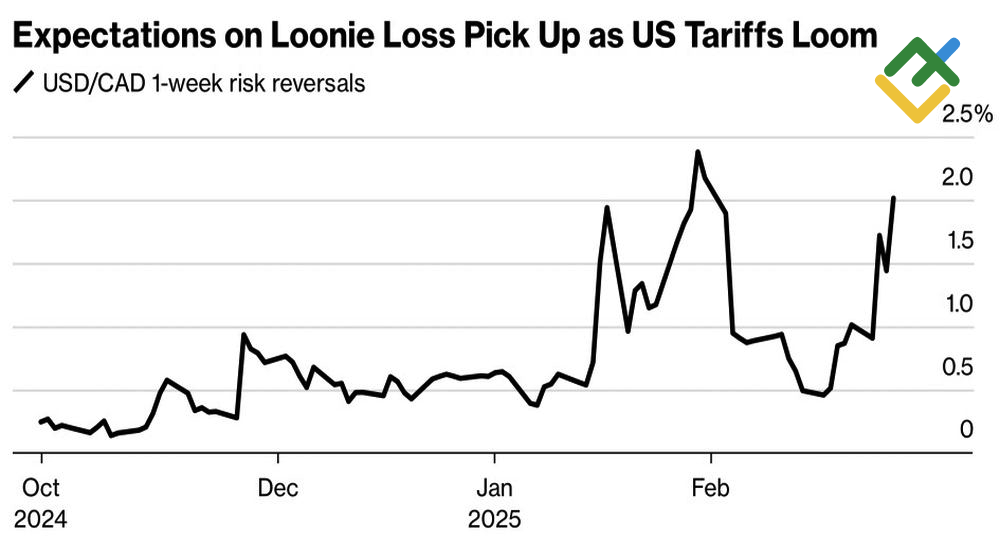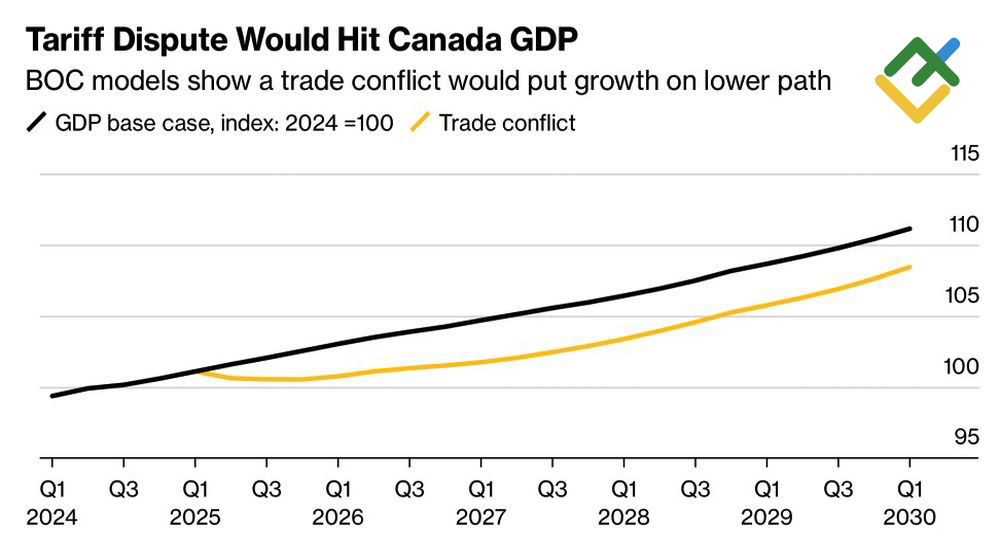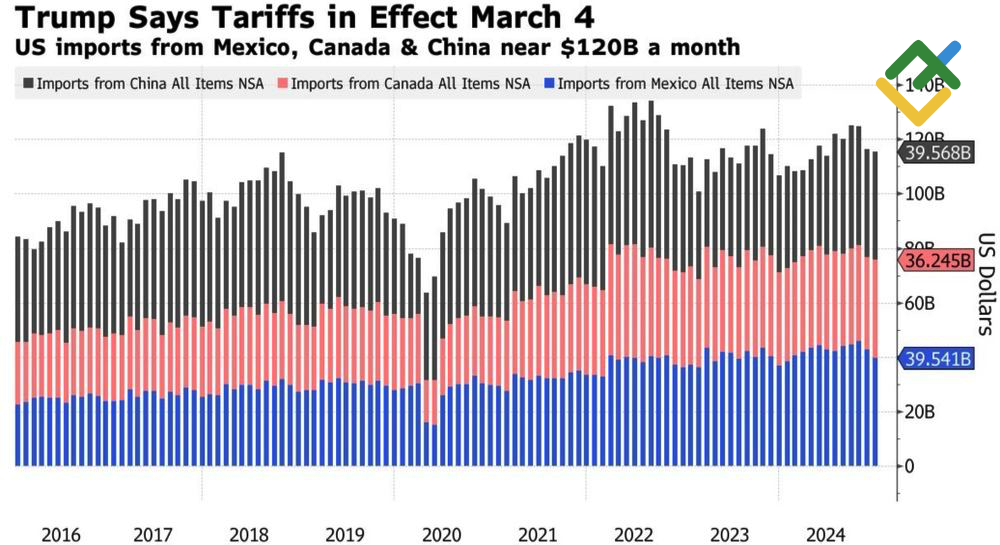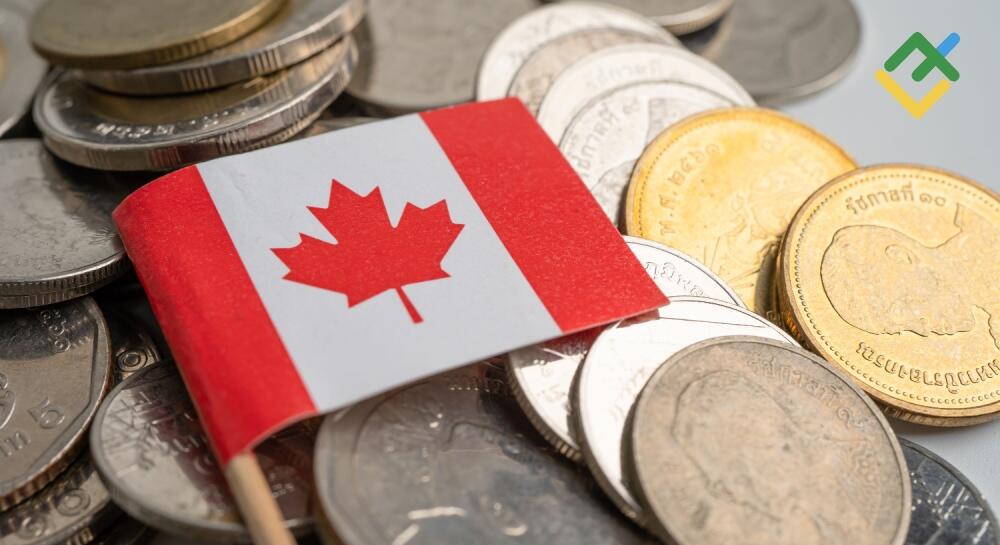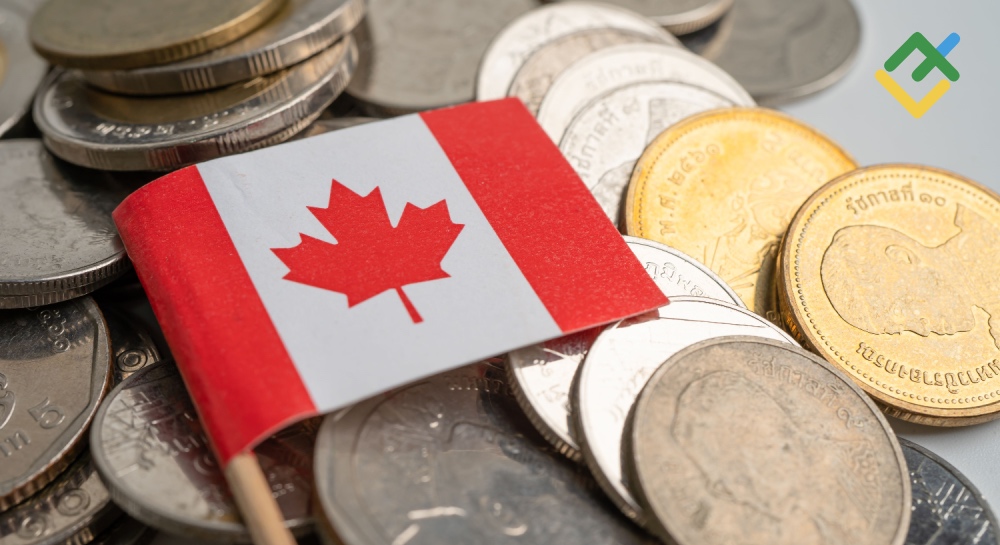
U.S. 10% levies on oil imports and 25% tariffs on all other goods from Canada are expected to shrink Canada’s GDP by 3% within two years. Can this be avoided, and is it possible to extend the tariff delay? Let’s discuss it and make a trading plan for USD/CAD.
The article covers the following subjects:
Major Takeaways
- The U.S. plans to impose tariffs on Canada starting in March.
- The loonie has been on a rollercoaster ride.
- A trade war could cut Canada’s GDP by 3%
- A delay in tariffs offers a chance to sell USD/CAD with targets at 1.433 and 1.41.
Weekly Fundamental Forecast for the Canadian Dollar
If you enjoy rollercoasters, the Canadian dollar and Mexican peso are currently your best choice. These currencies surged after Donald Trump hinted that 25% tariffs might not start until April, only to crash the next day when he suggested March instead. As a result, USD/CAD hit three-week highs and is now cautiously awaiting spring.
The loonie gained 4.3% from its February lows against the U.S. dollar as investors grew confident that Trump’s tariff threats are just negotiation tactics. However, as the tariff delay deadline approaches, hedging against a USD/CAD rally is increasing, raising the risk of the pair’s reversal.
Canadian Dollar Risk Reversal Dynamics
Source: Bloomberg.
Hope for the best, but prepare for the worst. TD Securities believes positive macroeconomic data could allow the Bank of Canada to lower its overnight rate to 2.5% instead of the previously expected 2.25%. But only if there’s no trade war between Washington and Ottawa. Unfortunately, one seems imminent.
The BoC predicts a chain reaction if the White House imposes 10% levies on energy imports and 25% tariffs on all other goods, and Canada retaliates. In this scenario, Canada’s economy could shrink by nearly 3% within two years, delaying its growth path to 2.5% annually compared to a no-tariff scenario.
Canada’s Economic Dynamics
Source: Bloomberg.
Bloomberg suggests that retaliation would be disastrous for the Maple Leaf Country. However, instead of the government, Canadian citizens could step in to respond to Trump’s mockery.
In 2024, Canada bought $349.4 billion worth of goods from the U.S., nearly matching the European Union’s total. Canadians are also the largest group of foreign tourists in the U.S., spending $20.5 billion last year. After Trump called Canada the “51st state” and Prime Minister Justin Trudeau an “American governor,” Canadians are favoring domestic products and canceling trips south.
U.S. Import Dynamics from China, Canada, and Mexico
Source: Bloomberg.
This backlash is hurting U.S. businesses, which could slow American GDP growth, much like during Trump’s first trade war. The U.S. president has strong reasons to extend tariff delays for Mexico and Canada — but will he?
Weekly Trading Plan for USDCAD
If tariffs of up to 25% on Canadian imports are introduced in March, a trade war between Washington and Ottawa will push USD/CAD higher toward 1.466 and 1.48, creating a buying opportunity. However, a new delay until April would support opening short positions, targeting 1.433 and 1.41.
This forecast is based on the analysis of fundamental factors, including official statements from financial institutions and regulators, various geopolitical and economic developments, and statistical data. Historical market data are also considered.
Price chart of USDCAD in real time mode
The content of this article reflects the author’s opinion and does not necessarily reflect the official position of LiteFinance broker. The material published on this page is provided for informational purposes only and should not be considered as the provision of investment advice for the purposes of Directive 2014/65/EU.
According to copyright law, this article is considered intellectual property, which includes a prohibition on copying and distributing it without consent.
{{value}} ( {{count}} {{title}} )
This post is originally published on LITEFINANCE.

